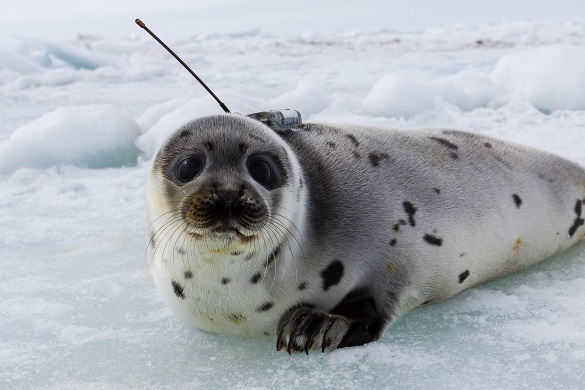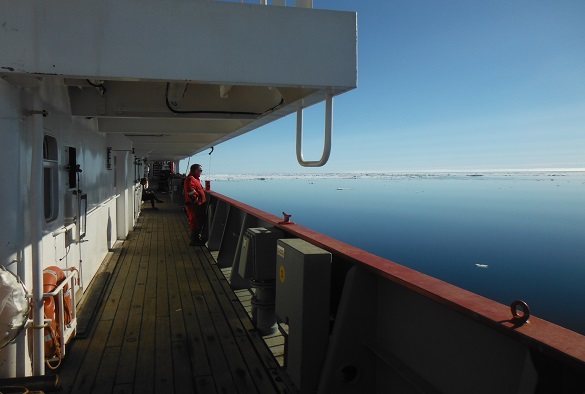New research helps detect change in Arctic Ecosystems
Published on

Researchers from the University of Liverpool’s School of Environmental Sciences have made an important finding that could help assess the impact of environmental and human-induced changes on ecosystems at pan-Arctic scales.
Led by Dr Camille de la Vega, researchers demonstrated that the stable nitrogen isotope signatures in harp and ringed seals across the Arctic are directly controlled by the stable nitrogen isotope signature of the water masses they forage in.
This finding has important implications for accurately estimating the trophic position of predators, as water mass circulation in the Arctic Ocean has been altered during the last decades as a result of climate change.
Knowledge about the trophic position of a species is an essential component to understand complex ecosystems. The trophic position of marine predators, ascertained through tracers such as stable nitrogen isotopes, can be used to infer the impact of environmental change on these complex marine ecosystems.
To interpret these tracers in predators, scientists need to understand how the environment drives the stable nitrogen isotopes at the base of the food web, how these tracers vary across environments, and how they relate to predator isotope composition.
Dr Camille de la Vega said: "The rate and timing of environmental changes in the Arctic differ between geographical regions. International collaborations are therefore crucial to optimise science outputs, and allow holistic approaches and overall comparison between Arctic regions. This manuscript and in general the ARISE project, is a perfect example of a research relying on such collaborative network, as it involved in total eight institutes and universities in the UK, Canada and Norway, and combined samples collected across the Arctic Ocean."
Leader of the ecosystem work package, Dr Rachel Jeffreys, said ‘The ability to accurately link mobile predators to the water masses they forage in will help us to understand the impact of previous and ongoing changes in the Arctic on the foraging strategies of these animals’
The research was carried out as part of the NERC-funded Changing Arctic Ocean Programme, the project ARISE, led by Professor Claire Mahaffey. In collaboration with international project partners in Canada and Norway, the ARISE team has access to tissues from two seal species (harp and ringed) and use these ice dependent predators as a model for determining trophic position across large spatial scales in the Arctic.
Published in Limnology and Oceanography Letters, the research also provides a reference for best practice on the accurate comparison of trophic position in predators and opens up new possibilities to uncover the true extent of climate change both in the Arctic and beyond.
The paper `Arctic seals as tracers of environmental and ecological change’ (doi.org/10.1002/lol2.10176) is published in Limnology and Oceanography Letters.
Image credit: Tim Brand (SAMS)
